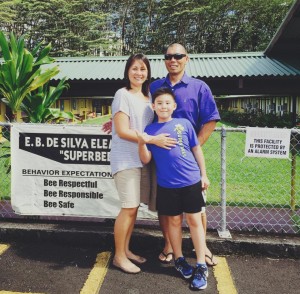2017 New Classification of Seizures
- Where seizures begin in the brain
- Level of awareness during a seizure
- Other features of seizures


This article was provided by Disability Benefits Help, an independent organization dedicated to helping people with disabilities get the benefits they need. If you have any questions, our staff can always be reached athelp@disability-benefits-help.org
____________
Epilepsy and Disability Benefits
If you’ve been diagnosed with epilepsy, there may financial resources available for you. Children and adults with epileptic disorders can qualify for disability benefits from the Social Security Administration (SSA).
When children get benefits, they are typically paid through the Supplemental Security Income (SSI) program, while adults may qualify for SSI in addition to Social Security Disability Insurance (SSDI), which is for adult taxpayers. Regardless of what program you qualify for, monthly disability payments can help cover everyday living expenses and other costs, like medication co-pays and doctor bills.
Medical Evidence of Epilepsy
Whether you’re applying for benefits for yourself or on behalf of a child, the SSA needs specific medical evidence in order to approve a claim for disability. Along with medication and other treatment records, medical evidence must include test results and other documentation that confirms the diagnosis of epilepsy.
Additionally, a disability claim must include the seizure type as well as how often seizures occur and how long each episode lasts. At least one detailed description of a seizure must be included and this description should ideally be documented or recorded by a medical professional after witnessing an epileptic episode.
Non-Convulsive Epilepsy
You’ll find the requirements for approval are similar for children and adults with non-convulsive epilepsy, although the SSA does maintains separate disability listings. The adult listing appears in Section 11.03 of the SSA’s Blue Book, while the child listing is in Section 111.03.
To meet the medical approval requirements as a child or adult, seizures must happen at least once a week, even after following prescribed therapies for three months or longer. A loss of consciousness or awareness must result from seizures as well.
For adults, the SSA also requires that seizures significantly disrupt daytime activities or that you experience residual effects after an epileptic episode, like odd or unusual behavior, a change in energy level, or muddled thinking, for example.
Convulsive Epilepsy
The adult listing for convulsive epilepsy appears in Section 11.02 and the listing for children is in Section 111.02.
For adults to qualify, they must experience a seizure more than once a month even after a minimum of three months of prescribed therapy. Seizures may occur during the day or night. With daytime episodes, a loss of consciousness is necessary, while nighttime seizures must severely compromise the adult’s abilities or activities the following day.
Children can qualify if they have seizures once a month, even after three months of therapy, and have daytime or nighttime episodes that cause the same results as those outlined in the adult disability listing.
Children can additionally qualify if they have at least one major seizure per year after three or more months of therapy, along with at least one of the following:
Applying for Benefits
If you’re applying for benefits for yourself, you can submit and SSDI application online or apply at your local SSA office. SSI applications for adults or children however require a personal interview, and interviews are usually conducted at the local field office. In some cases, applicants decide to call the SSA instead to complete a telephone interview at 1-800-772-1213.

Special thanks to Julie Lam-Iida for writing this blog post!

My name is Julie Lam-Iida, a mother of 3 wonderful boys and a wife to a fabulous husband. Let me start my story…I knew in my heart of hearts that I was meant to be a mother. Not knowing when the time came when my husband and I were ready to start a family…I couldn’t. I had gone through countless diagnostics and procedures to find out why I couldn’t get pregnant and why I wasn’t able to sustain my pregnancies. I was so devastated. The fact that I was a woman and could not give the gift of life. I felt incomplete, tremendous guilt and a failure as a woman to not be able to bear children. My husband supported me through these dark years. The year I had my second miscarriage, a few months later I was pregnant again! This time we were cautiously optimistic and were praying quietly in our own way that higher power will be able to help us become a family plus 1.
The months went by as we cherished these good and bad moments of pregnancy, we were able to give birth to our precious boy for many years, I kept my names of potential boy and girl names. The one name that was always on the top of my list was Ethan. We named our little guy Ethan Kenji. He brought and continues to bring us so much joy in our lives. With all his imperfections, he was OUR perfect little boy!
When he was 7 years old, he was showing intermittent signs of some odd behaviors where in some evenings and on occasion when he was playing soccer. He would freeze, stop in his tracks, arms and hands clenched and sometimes will walk himself sideways off the field, and have this look of fright. We took him to the pediatrician and expressed our concern, initially thinking it may be cardiac issues. We went to Kapiolani Medical Center for Women and Children in Honolulu to consult with a Pediatric Cardiologist. The results of his assessment were negative. Later in the year we planned a family trip to San Diego, Lego land, and Disneyland then he on occasion would show similar signs. Once our vacation was done, we went back to our Pediatrician and suggested we attain a neurology consultation. Back to Kapiolani hospital for EEG and back to Hilo for a MRI, then back to Honolulu to meet with our Pediatric Neurologist. Then it was confirmed Ethan had seizures on the right parietal lobe of his brain. We were relieved to find out he had an actual diagnosis, BUT at the same time it was devastating. Next question was “What next?” and “What does this all mean for Ethan?” He was diagnosed with “Seizure Disorder”, but not knowing what type of seizures he had.
Now, he is 8 years old has been through a lot since being diagnosed. Trialing seizure medications, combination of different meds, which did not help him to achieve his “seizure–free” goal. Right after the school year ended, Ethan was hospitalized for his new medication to be infused via IV at Kapiolani Medical center, following multiple blood draws to check his Dilantin levels where his number of tablets would have to be adjusted almost every other day to maintain his therapeutic level. Over a 2-3 week period he started to show signs of welts, constant high fevers, and swelling to his face and eventually his condition progressed to where he had to fly to Honolulu with my mom (along with his brothers) to Kapiolani Hospital to be admitted. Erwin and I were making arrangements to fly from my training class in Maui to Honolulu (to meet my boys) to admit Ethan to the hospital.
Ethan was finally admitted. His condition worsened, not only with his lab levels with his blood and organs, but his skin on his lips where they were dry, cracked, bloody, lesions within his mouth, tongue, and throat leaving him not being able to open his mouth to drink, perform oral hygiene, and not being able to eat without pain or his lips ripping and bleeding. He was in the hospital for 8 days and at least 3 days with no food and not being able to open his mouth. He stopped talking and look so defeated. This was the lowest point of his life. At one point he actually started to cry out “I am going to die!” as the nurses were trying to start a new IV site. I cannot even tell you how much pain I had down to my soul to see him in this state! As I am writing this I brings back so many raw emotions. To feel absolutely helpless …HELPLESS for your child. I couldn’t take his pain away; I could not help him heal fast enough. His little body and he not fully understanding what’s happening and why him? How do you explain this to your young child?
While experiencing this with my son, I had to stop asking “Why him, why our family, and what did we do to deserve this suffering?” I had to tell myself, I need to be proactive and productive to better understand my son’s condition, how to create awareness first with people that he will come in contact with…school, Kempo, etc. I had gone through phases of denial, the “Why’s”, anger, fear…Now, I had to be strong and focused for the sake of my family and Ethan. Our role as a family to support each other, educate and train my younger boys to help and not be afraid when his brother experiences his seizures. It is true, one parent did say during our first support group with our neurologist ‘their siblings are getting the best first hand education about seizures and it will also teach them to be empathetic to others who have physical challenges d/t their medical condition(s).’ I have to say that my husband has been my rock, without him to lean on I would be a wreck. My other children, Aiden (7 now) and Ian (5-still in training) have seen Ethan’s seizures enough to not be afraid, but able to help him stay safe during his episodes.
I am grateful that we were able to seek out the Epilepsy Foundation of Hawaii (EFH) in Honolulu for resources and support during our second year journey with Ethan’s Epilepsy. Kathleen Stofocik, the Executive Director of EFH and Jessica Garlock were invited to my boys’ school in Hilo to conduct a school wide assembly, a presentation to Ethan’s third grade class and also a training session with faculty regarding variations of seizures and first aid. They played an intricate part with creating a start to Epilepsy Awareness in our school and for Ethan. I had a lot of positive feedback from the children, most who came into contact with Ethan, who are able to help emotionally support him and also can recite “Stay Calm, and Call for Help” in addition to other key first aid points. I was also impressed that they discussed bullying and identifying seizures as a medical condition and those individuals who have seizures are NO different than you and I.

We need more education and awareness regarding epilepsy. Together we NEED to get individuals out into the open to seek support with one another. I know the Epilepsy Foundation of Hawaii will be a strong support for our community. It has been and will continue to be our support for our family.
Julie Lam-iida

Written by Teen Advocate, Sydney Baron
My name is Sydney Baron. I am 17 years old and a Senior at James Campbell High School. I was diagnosed with Epilepsy during second grade after suffering a seizure in the back seat of my moms car while be driven to school. Ever since then I have been taking medication regularly multiple times a day.
Sometimes I feel trapped by my epilepsy, but I try to remind myself that I am one of the lucky ones. My seizures are infrequent and are somewhat controlled with medication unlike others who even with medication still suffer severe seizures and have their daily lives wracked with chaos. I believe one day there will be a cure and that I won’t have to take medicine every single day for the rest of my life all in the hopes of never having to endure another seizure. I find comfort in the fact that most people with epilepsy lead pretty normal lives. Did you know that 80 percent of people living with epilepsy can be significantly helped by modern treatments and therapies? And some go months or years between seizures!
I do happen to fall into that category but that does not prevent me from being cautious. I cannot live freely as others. My independence has been taken away. I cannot swim alone, I need to leave the bathroom unlocked especially when taking a shower, most activities need to be chaperoned and I put others at risk if I choose to drive a car.
It is common for people with epilepsy, especially children, to develop behavioral and emotional problems because of seizures. I found that because I was embarrassed, frustrated, tired, and feeling ill a lot, that it has caused emotional difficulties for me. Many people with epilepsy also live with a constant fear that they will have another seizure. Before I do anything like crossing the road to get to school, riding my bike, climb a set of stairs, I always have to ask myself “Do I feel safe?” The whole thing is tiring.
I have not let Epilepsy or learning disabilities I experienced at a young age stop me from reaching my goals. I try to be as normal as possible. I have competed in dance competitions, participated in school activities, and I have joined several clubs at school. I have competed in the National HOSA Competition the last two years in a row which is for Health Occupational Students of America. My last few years of High School have been good ones. I was on the Principals list and inducted into the National Honor Society. I recently applied to and was accepted the University of Nevada Las Vegas which is where I will be attending in the fall majoring in Chemistry.
Most recently I attended the “Teens Speak Up!/Public Policy Institute” in Washington DC, as the teen ambassador for Hawaii. I also participated in the National Walk for Epilepsy while there. This conference allowed me to meet with the state Senators and other legislators at the Capitol to share my story and advocate in support of the Epilepsy Foundation’s legislative goals. This includes greater funding for a cure, better treatments and programs, improved access to medical care and treatment and to help stop stigma and discrimination against epilepsy.
Please help me and others, be a voice and bring awareness and assistance to a much needed cause.


This month’s Hot Topic was What’s your mood?, with neuropsychologist, Dr. Tanya D’Avanzo. I am so glad that I attended the session – I left feeling renewed and inspired. The experience reminded me of why I am committed to the Epilepsy Foundation of Hawaii, and how public awareness and understanding of epilepsy can help those affected by it.
About 15 people participated in the group session. We listened, shared, laughed, cried (OK, I was the only one who cried) and were inspired by the stories told.
Dr. D’Avanzo said that about 10% of people with epilepsy have depression, which can be demonstrated by persistent sadness or anxiety, lack of interest in normal pleasurable activities, lack of appetite, and insomnia for two weeks or more. Social isolation can be a sign of depression. Dr. D’Avanzo recommends that those with thoughts of suicide seek help. Compared to people with other chronic illnesses, people with epilepsy are more prone to depression, perhaps due to chemical imbalances.
The group shared stories of their own difficulty talking with others about epilepsy and feeling like they aren’t accepted by their parents. It honestly broke my heart to hear one person share that they don’t feel accepted by their parents and have been living with these feelings for decades. Even as adults, we want to please our parents. It was sad and upsetting at the same time. But, it made me look around the room at the parents who accompanied their adult children to the session. It reminded me that the world is changing, and the first step to accepting epilepsy is to understand epilepsy.
Perhaps this person’s parents would have treated their child differently if they understood epilepsy. Perhaps it wouldn’t have been so scary or embarrassing if they had talked about it. One person shared that it’s easier to say that they’ve had a stroke than to say that they have “the E word”. I found that so interesting. My guess is that more people know about strokes compared to epilepsy, so it’s easier to say you’ve had a stroke then to go into further discussion about epilepsy and seizures. This is exactly why I want everyone to learn about and talk about epilepsy – so that my son and others with epilepsy are comfortable talking about it too. I want Jax to grow up in a community that understands epilepsy so that he doesn’t feel it’s something to hide.
Dr. D’Avanzo brought up a quote from Maya Angelou:
“There is no greater agony than bearing an untold story inside you.”
Epilepsy can be an invisible disorder. The group talked about the positives of having epilepsy – like having a stronger drive to accomplish things and also having empathy for others. Dr. D’Avanzo reminded us that positive interactions have ripple effects stronger than negative interactions, and that assertiveness can help us deal with negativity. Actively talking about feelings and seeking support correlates to positive quality of life. Exercise, sleep, routines, order and structure are important and form healthy habits in our lives. She stressed that it’s important to communicate with your neurologist or physician, and also to communicate your depression with your loved ones. Express your feelings to your family by setting time to talk, developing a vocabulary for feeling words with young children, writing a letter to elderly parents, or even going to family therapy with adult children.
Dr. D’Avanzo also discussed medications for treating depression, and that you need to stay on a medication for six months to see its effectiveness. She said that you don’t develop tolerance or addiction to depression medications, which take about three to four weeks to work. You can visit www.hawaiipsychology.org to find a psychologist.
Dr. D’Avanzo reminded us to pay attention to those who drop off, and to check in with them. She also recommended surrounding ourselves with positive people –and that’s exactly what we did.
The session ended with the group sharing their accomplishments – such as going back to school and participating in competitive sports. We all stood together and learned a few karate moves from one participant whose energy and positivity brought smiles to our faces. Following up to what Dr. D’Avanzo said about being around positive people, I encourage everyone to be that positive person in others’ lives.
Thank you to those who attended our Hot Topics, and thank you to those who support the Epilepsy Foundation of Hawaii and enable us to continue group sessions like these.

Written by a Hot Topics participant:
We’re talking about 42 USC 1396p(c)(8)(b)iv.
Is that’s what’s right for you and your family when estate planning, trust funds, etc.?
What?! You don’t know what a 42 USC 1396p(c)(8)(b)iv is?
Personally, I don’t know the full scope of a 42 USC 1396, blah, blah, blah is, but that is how intricate the law is when it comes to special needs trusts, which incidentally are a good thing to know about if you or a loved one has a disabling form of epilepsy.
I don’t know how simplified the law could be, but law is not simple.
Tonight, at EFH’s Hot Topics, Attorney Scott Suzuki, gave an extended explanation of why things like 42 USC 1396, blah, blah, blah, are a necessary consideration for families with members who have disabling forms of epilepsy. It protects the family. It protects the person with epilepsy. But most importantly it ensures that the person with epilepsy gets more than the government hoops would otherwise allow them to enjoy, at minimum.
When talking about trusts, the legal requirements and implications of things as discrete as buying an extra value meal for someone with epilepsy, I find that the caveats can become overwhelming and even intimidating.
After Scott educated us on the evolution of laws relating to disabilities, he gave an outstanding description of current legal framework, what is out there for people affected by epilepsy and wrapped it up with answering questions galore.
Honestly, learning about special needs trusts made me feel like I was in college again. However, this time it felt more real
Providing educational outreach to community groups to increase epilepsy awareness.

Last night’s Hot Topics was facilitated by Natalie Morgan, APRN. We discussed why one anti-seizure medication is chosen over another, side effects of anticonvulsants and questions to ask your provider about your medication.

Here is a handout that was presented during the discussion. Below is a recap of the session from one of the attendees…
Propecia is the name of a drug to stimulate hair regrowth. Most people who watch television have heard about it. If hair regrowth is that important and people pay as much as they do for it, drugs that control seizures are blessings from the heavens above. I will attest to that, the anticonvulsant part.
Unfortunately, there is not a single drug solution for seizure control. At tonight’s Hot Topics meeting, half epileptics and the half caregivers, we were all educated on the multidimensional world of anticonvulsants. Considerations included, types of epilepsy, the process of finding what’s right, brand versus generic, side effects and even how to handle time zone changes (i.e. travel). It was thorough.
The simple answer to the question of “what should I take?” was, “it depends.”
There is no silver bullet medication for seizure control, nor can we expect to find one drug to be the right one for us, forever. There are about twenty different prescription medications that may help or even worsen an epileptic’s situation, and a few more in the pipeline. As our lifestyles and bodies change, we learn to adapt. Medications are PART of adapting.
Medical marijuana has received a lot of press lately, even for epileptics. The subject came up. Could that be the silver bullet? Maybe, maybe not. It depends.